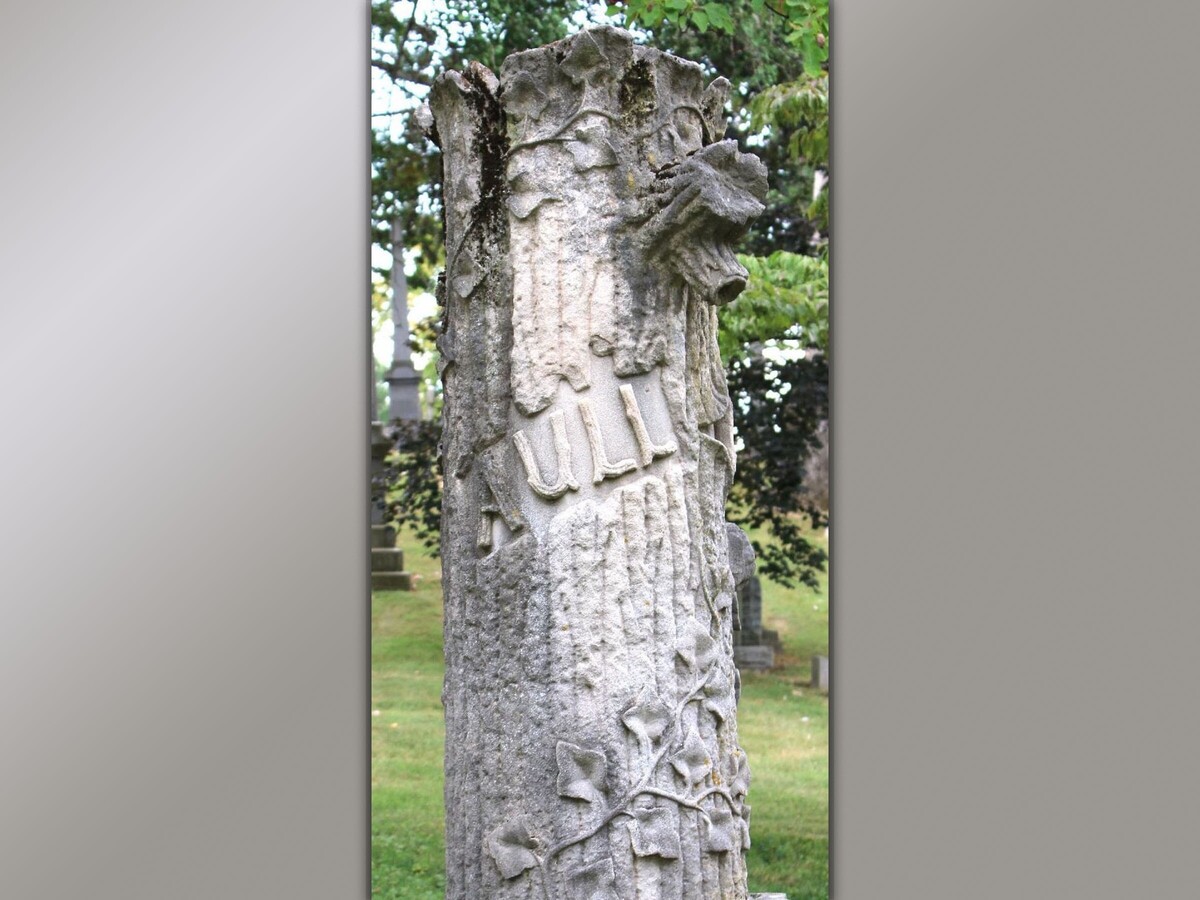Image

Courtesy of Misti Spillman, Manager, Preservation and Community Outreach Woodland Cemetery & Arboretum. Living here in Warren County, we are fortunate to be between the two larger cities of Dayton and Cincinnati. This allows us to not only share in both of these city's accomplishments, but in their residents. And, believe it or not, one way of learning about these people can often be found in historical cemeteries. Dayton, Ohio's Woodland Cemetery and Arboretum, which is one of the oldest garden cemeteries in the United States, is filled with history. And, this November the WarrenCountyPost.com has been given the privilege to publish a piece from Woodland Cemetery and Arboretum about "Tree Stones."
William & Mamie Aull’s family monument, located in section 58, lot 390, is an excellent example of a style of memorial art called a tree stone. Grave markers, like tree stones, don’t just represent an individual person, or even like the Aulls, a whole family; they reflect the trends of an era and the cultures that produce them.
Although tree stones first begin to appear in the 1850s, the art form really begins to take off nearer to the end of the 19th century. Looking at this from the broader vantage point of history, it makes sense. Facing a world of growing industrialization, towns swelling into cities and rapidly changing technology, people at this time were responding with the idealization of an imagined "rural" past. We can see this in the characteristics of popular art from the late 1880s; Art Nouveau and the Arts & Crafts style of architecture.
Both movements produced some truly amazing art inspired by the shapes and lines that make up the natural world. If you’re a person who is living in this medley of cultural context and are asked to think of how best to memorialize a person or family, it won’t take your brain long to suggest the form of a tree. Symbolically, trees are hugely significant to cultures around the world—including what we refer to as the "Victorian Era."
If we understand these symbols, tree stones can tell us a lot about the person or family they memorialize. Broadly speaking, a monument in the shape of a tree evokes the "family tree."
Tree stones were particularly popular at garden cemeteries like Woodland, which is home to a number of variations on this theme. Though the demand for tree stones began to recede by the mid-1920s, the symbolic power of trees has endured.
Many modern grave markers, though not tree shaped, incorporate similar elements of design. Even if the style is chosen purely for aesthetic reasons, the meanings we ascribe to them are developed by the time and place in which we live.